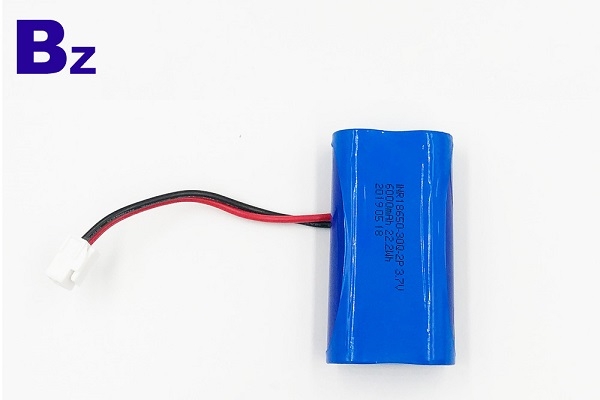Batteries can reach the desired operating voltage when there is a connection of several cells in series; Each of the cells will add its voltage potential to obtain the total voltage required across the terminals. On the other hand, the parallel connection brings about a higher capacity by simply adding the total amp-hour (Ah) of all cells involved.
Some battery packs, however, consists of a combination of serial and parallel connections. For laptops, there are generally four 3.6V lithium-ion cells connected in series to achieve the nominal voltage of 14.4V and then two cells connected in parallel to increase the capacity from 2400mAh to 4800mAh. This configuration is known as the 4s2p, which means four cells in series and two cells in parallel. The insulating film between the cells will prevent the conductive metal skin from causing a short circuit.

Most of the chemistries used in batteries are suitable for both series and parallel connections. It is however important that the same type of battery with the same voltage and capacity (Ah) is used, and should never be mixed with different brands and sizes. A weaker cell will bring about an imbalance in the system. This is particularly important in any configuration done in series, and this is because a battery is as powerful as the weakest link in the chain.
Lithium battery parallel charging operation
If there is a need for higher currents, and there is no room for large cells, or the large cells do not fit the design or structure of the battery or the device, then, one or more cells may be connected in parallel. Most of the battery chemistries as earlier stated allow for parallel connection and configurations, and with very little to no side effects. The nominal voltage may remain the same (e.g 3.60 V), but the capacity (Ah) and the runtime of the battery will multiply –according to the number of batteries connected.
So, when batteries are connected in parallel, the capacity of the battery in Ah will increase, including the runtime. But the voltage will always remain the same.
A cell that develops high resistance is less critical when added to a parallel connection than it is in a serial configuration. But a defective cell reduces the total load capacity. It is similar to an engine of four cylinders which is only firing on three, instead of four. An electrical short is, however, more serious because the defective cell drains the energy from the other cells and can create a fire hazard. Most of the so-called electrical short circuits are mild, and they express themselves as high self-discharge.
A complete short may occur through reverse polarization or a dendrite growth. So, large packs mostly include a fuse that will disconnect the defective cell from the parallel circuit when it is short-circuited.
A weak cell does not affect the voltage, but it will bring about a reduced runtime because of the capacity that has been reduced. A short cell can cause excessive heat and pose a fire hazard. In larger packs, there is a fuse present. The function of the fuse is to prevent a high current by isolating the faulty cell.
Can you safely charge lithium batteries in parallel?
Yes, batteries in parallel can be safely charged. All you need do is to follow the safety precautions associated with the charging of lithium-ion or lithium polymer batteries. If you do not know how this works, you either find someone who can do it, or you don’t try it at all. Most times, using the right tools (like the right charger) can save you a lot of stress and time.
Only batteries of the same type (deep cycle, starting, AGM, sealed, gelled, maintenance-free) may be charged at the same time when connected in parallel (from + to +, from - to -).
When the batteries are connected in parallel, the total voltage of the batteries is maintained. For example, if two 12-volt batteries are connected in parallel, the combined voltage is 12 volts.
If you connect multiple batteries in parallel, ensure that you connect the positive terminal (+) from the first battery to the positive terminal (+) of the second battery. Then, in the same way, connect the negative terminal (-) from the first battery to the negative terminal (-) if the second battery.
The plus sign of the first battery and the minus sign of the first battery should be connected to a BatteryMINDer if available. Otherwise, connect them to the accessible battery.
Then also ensure you are connecting each battery to the other using an insulated gauge 18 cables (the lamp cord type). Strip it where you want it to be in electrical contact with the terminals of each battery, then use a ring or clip connections to keep it in place.
Remember to always ensure that you desulphurize each battery separately for about 2-3 days if you are connecting them in parallel. Otherwise, they will not be desulfated equally.
What is the difference between series and parallel charging of lithium batteries?
Electrical components are either connected in series or parallel. They both possess advantages and disadvantages and also have their applications –where they are the strongest.
When the lithium-ion batteries are connected in series, the capacity of the battery remains just the same as it is, but the voltage of the battery increases.
While the voltage of the lithium-ion batteries remains the same when the battery is connected in a parallel configuration, the capacity, however, increases with the addition of the cells in the setup. In a series configuration, a balancing circuit is needed to equalize and compensate for the SOC imbalance, while parallel cells to a large extent balance themselves. Every large capacity battery has got a parallel pouch cell connected internally. But on the other hand, each high voltage battery has cells connected in series internally with a balancing circuit.
These are a few of the differences between batteries connected in series and parallel. When building a battery to be connected in parallel, ensure you observe all the precautionary rules to stay safe.



